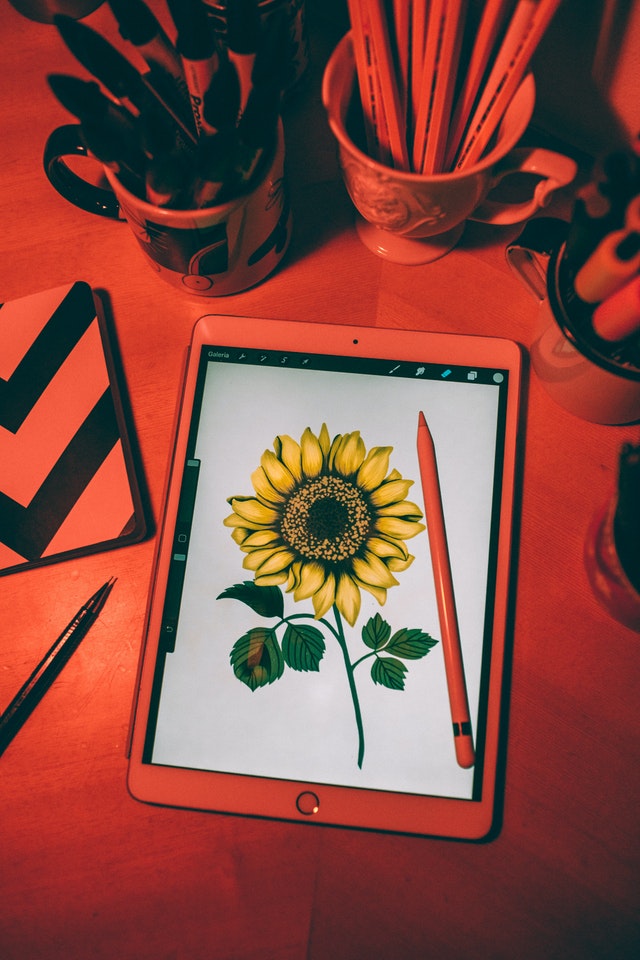7 Web Design Principles

Design is a means of communicating a message to a specific audience, and to achieve an effective web design that conveys the message we want to convey correctly, we must put into practice various design fundamentals, one of which is the visual hierarchy, which is organizing the elements of a website to deliver the message to its recipient.
This foundation consists of giving more visual weight to some elements than others, which helps guide the user’s view and suggests which ones are most important.
Size
By playing with the sizes of the various items that we have on our website, we can easily draw attention to where we want. Because of this, it will be one of the most important among the foundations of design.
Larger objects attract more attention. Size is the fastest, most effective way of attracting the user to a specific item or location on the web. Also, people relate size to the importance of the larger an element is.
The more important our user believes it is and what it contains. On the contrary, the smallest elements that we think are the least relevant and for this reason, we tend to ignore them.
On the other hand, in the use of elements of different sizes, fractions have used The monotony of the design that does not let our visitors get bored and want to leave them.
Colour
Color is another of the fundamentals of design which for web designers is one of the most effective tools for attracting attention and highlighting certain elements. Bright and vivid colors are the best for capturing the attention of the user and even arouse their curiosity, but the truth is that the choice of colors is a sensitive issue because if they are too strident, it can be annoying.
Colors, in addition to having the ability to attract and to stand out, to convey emotions and to help connect with those who observe them, then we cannot choose a color just because it attracts attention but, also, we have to choose a color that conveys what we need and, if that wasn’t enough, that it pairs well with our corporate colors. All this without forgetting who our target audience is.
Contrast
Contrast is one of the design essentials that can help us highlight what we want on our website, so when we look at something with similar colors or font sizes and suddenly find a big change, we understand that something is different and immediately grabs our attention. For example, in the color scheme, if we look at a palette of cold and pastel colors, and at some point, on the web, we see a warm and bright color; We will stop there to find out why it is different and what it contains.
Repetition
Repetition helps to understand the importance of each content, for this reason, this fundamental of design should also be known, a clear example is the texts of a website.
If we put the explanatory texts in six paragraphs with the same font size and color, when the user sees a seventh text displayed in the same way, he will know that it is a paragraph of the same type. a text in a different color at some point; you will understand that it is a different aspect, like a link.
Proximity
Proximity is one of the foundations of design that can help us the most in evaluating content and identifying similar characteristics. When we place several elements close together, we form a group of elements so that they are assumed to be the same. If, on the contrary, we separate a single element from the rest, we imply that it is different. Grouping elements help us to create sections and subsections within a website,
e.g. In a blog, we find a sidebar with different content inside so that each of this content is perceived as a group, and in turn, all as a whole, like another (the sidebar in its entirety).
Alignment
We place the elements to make them more or less important, so the alignment will be something that we play within our design. The contents that go at the top of a web are usually the most important, and that is why we usually find the logo, the main one. navigation menu, shopping cart, etc.
The same goes for a blog, with the central content block being much more important than what we expect to find in a sidebar.
Blanks
In basic design principles, empty spaces are vitally important elements for organizing content and assigning importance to it despite what it may seem at first. White space is common in design because it helps give all content greater organization and a sense of order.
Assume that empty spaces were used correctly at a glance. In this case, the user will be able to identify the different blocks of content on our site, learn about those related to each other, and identify the different ones.
Contact web Development Company for professional web design and development services. They provide the best web development in India.
Feel free to reach out to me if you need help with what is right for you, using this link.
Cheers!